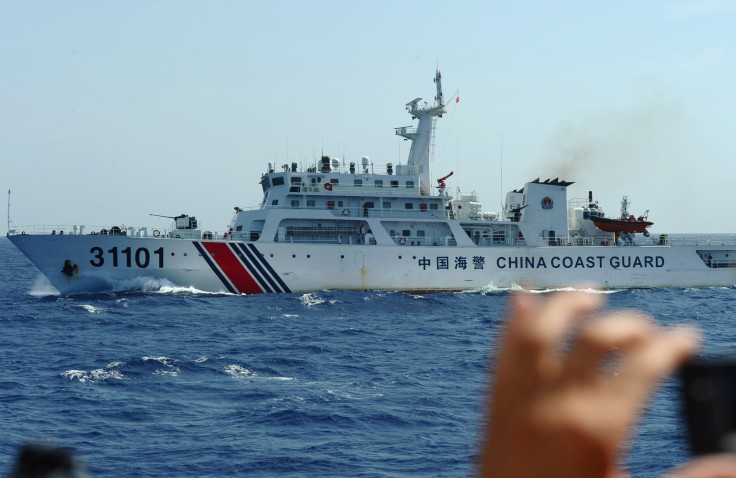China’s Floating Nuclear Power Plants Could Be Used To Fuel Construction And Defense In Disputed Waters In South China Sea, Experts Say

SHANGHAI — Chinese experts have said that a planned floating nuclear power station the country is building could be used to power construction work and defense facilities on islands controlled by China in the South China Sea. The comments, published in an official Chinese newspaper Friday, are likely to add to tension in the region, where Chinese reclamation of land to build harbors and runways on reefs in an area also claimed by several other countries has already fuelled controversy.
China has previously said it is starting to build two such platforms. And state media said Friday that the nation planned to build some 20 in total, with the first of these “about to start the final assembly” in northeastern Liaoning province. A senior official said recently the first reactor was due to be put into use by 2019. Officials have suggested the floating reactors will “power offshore oil and gas drilling, island development,” while desalination plants are another possible use.
Analysts believe China hopes to export the platforms, as it seeks to expand its nuclear industry globally. China currently has some 27 reactors in operation, with another 25 under construction, according to official reports, and the total number of plants in operation is due to rise to 110 by 2030. It is also seeking to expand rapidly into other markets, with preliminary agreements in place for China to take a role in the construction of at least two reactors in the U.K.
But with tensions high in the South China Sea, where Beijing has angrily condemned U.S. naval and air missions designed to assert freedom of navigation close to China’s reclaimed islands, which Washington says lie in international waters, the official Global Times newspaper quoted experts as saying the floating platforms could “significantly boost the efficiency of the country's construction work on islands in the South China Sea.”
The paper, a hawkish tabloid published by the official People’s Daily newspaper, which has frequently recommended a tough line on the disputed islands, quoted Li Jie, a Beijing-based naval expert, as saying that the platforms “could provide reliable power for lighthouses, seawater desalination, rescue and relief equipment, defensive weapons and airports and harbors on islands in the South China Sea.”
Li said this would avoid the need to transport coal or oil to the Spratly Islands, which are also claimed by Vietnam, the Philippines, Indonesia, Brunei and Taiwan.

China’s construction of facilities on reclaimed land on several reefs in the Spratlys chain has aroused anger among some of its neighbors, and led to a challenge in the Permanent Court of Arbitration in the Hague by the Philippines. But Beijing says it does not recognize the court’s right to rule on the issue: It says the islands have long been its territory, and the facilities it has built are for civilian and humanitarian use, including lighthouses it says will aid navigation in the region.
And Chinese experts and media have warned that freedom of navigation operations like those conducted by the U.S. will only lead to further militarization of the area. China is reported to have stepped up its deployments of missiles and fighters on Woody Island — known in Chinese as Yongxing — on another nearby chain, the Paracels, which is also claimed by Vietnam and Taiwan. And China's most senior general was last week reported to have visited the Spratly Islands "to understand the construction of facilities on the islands," according to China's Defense Ministry, while a military aircraft landed on one of the reclaimed reefs to evacuate three sick workers, Chinese media reported. While Beijing insisted this was a humanitarian mission, the Global Times said the flight showed the newly built runway was "up to military standards."
Last week, around the time of a visit to a U.S. aircraft carrier in the South China Sea by U.S. Defense Secretary Ashton Carter — who is seen to have pushed for a tough response to China’s expanding presence in the region — China was reported to have carried out a ballistic missile test, though it was not clear where this took place. China’s Defense Ministry Thursday confirmed it had tested an intercontinental ballistic missile, but said reports that the test was conducted in the South China Sea were “pure speculation” — though it did not specifically deny them.

China's President Xi Jinping is seen to have pushed for a more assertive line on the South China Sea issue since he took office some three years ago. He has stressed on a number of occasions that islands in the region historically belong to China, and has warned that Beijing will not hesitate to defend its sovereignty if necessary.
In this context, a plan to deploy advanced power generating facilities in the area may not be as fanciful as it first seems, though the technology remains untested. China is not the only country working on floating reactors: Russia is building a similar facility, which is due to be completed this year and put into service next year, while scientists at Massachusetts Institute of Technology in the U.S. are also reported to be researching similar technology. However, critics have warned of potential dangers, including the risk of an accident at sea or of the facilities falling into the hands of terrorists.
© Copyright IBTimes 2024. All rights reserved.






















